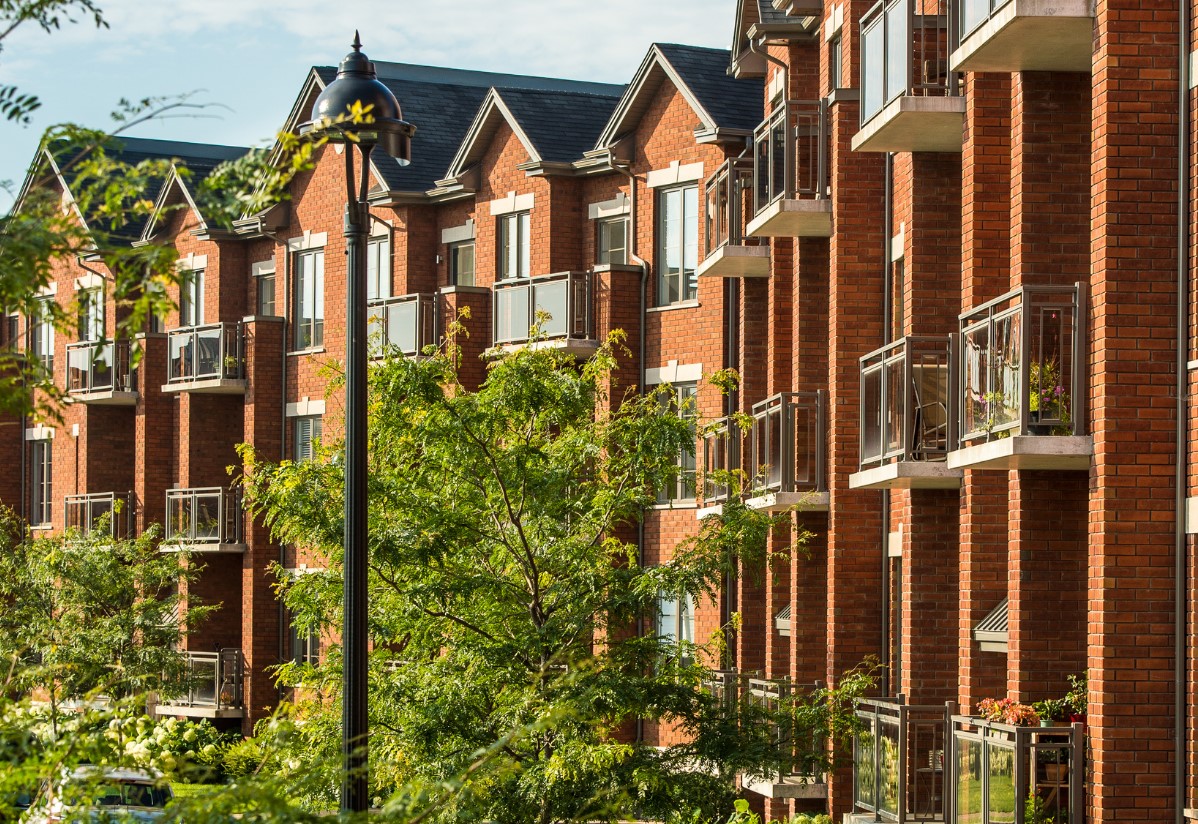 Last week’s economic reports included readings from the National Association of Home Builders on housing markets, Commerce Department data on building permits issued, and housing starts. The National Association of Realtors® reported on sales of previously-owned homes. Weekly reports on mortgage rates and jobless claims were also released.
Last week’s economic reports included readings from the National Association of Home Builders on housing markets, Commerce Department data on building permits issued, and housing starts. The National Association of Realtors® reported on sales of previously-owned homes. Weekly reports on mortgage rates and jobless claims were also released.
National Association of Home Builders: Builder Confidence Falls One Point
Supply chain issues and rising inflation concerned builders surveyed about housing market conditions in January. The National Association of Home Builders reported an index reading of 83 as compared to December’s reading of 84. While any reading over 50 is considered positive, January’s dip in builder confidence was the first decline in four months.
Component readings for the Housing Market Index also showed a slowing trend. Builder confidence in current housing market conditions was unchanged at an index reading of 90; builder confidence in housing market conditions over the next six months fell two points to 83. Builder confidence in buyer traffic in new single-family housing developments also fell by two points to 69.
NAHB Chairman Chuck Fowke said, “NAHB analysis indicates the aggregate cost of residential construction materials has increased almost 19 percent since December 2020.” Softwood lumber prices rose approximately 85 percent in the last three months according to trade publication Random Lengths. Analysts said that tariffs and labor shortages have also added to the cost of residential home building.
Commerce Department readings on building permits issued and housing starts were higher in December/ 1.87 million building permits were issued on a seasonally-adjusted annual basis as compared to November’s reading of 1.72 million building permits issued. Housing starts also increased with 1.70 million starts reported as compared to November’s reading of 1.68 million housing starts. Analysts expected a seasonally-adjusted annual reading of 1.65 million single-family starts.
The National Association of Realtors® reported December’space of 6.18 million previously-owned homes sold on a seasonally-adjusted annual basis. Analysts expected 6.48 million sales, which matched November’s reading.
Mortgage Rates, Jobless Claims Rise
Mortgage rates rose last week as the average rate for 30-year fixed-rate mortgages rose by 11 basis points to 3.56 percent. The average rate for 15-year fixed-rate mortgages was 17 basis points higher at 2.79 percent. Rates for 5/1 adjustable rate mortgages averaged 2.60 percent and 31 basis points higher. Discount points averaged 0.70 percent for 30-year fixed-rate mortgages, 0.60 percent for 15-year fixed-rate mortgages. Basis points for 5/1 adjustable rate mortgages averaged 0.30 percent. Rising mortgage rates, high demand for homes, and buyer competition continued to present challenges for first-time and moderate-income home buyers.
286,000 initial jobless claims were filed last week and exceeded expectations of 225,000 new claims filed and the prior week’s reading of 231,000 first-time claims filed. 1.64 million continuing claims were filed as compared to the previous week’s reading of 1.55 million ongoing claims filed.
What’s Ahead
This week’s scheduled economic reporting includes readings from S&P Case-Shiller Home Price Indices, the Federal Reserve’s Federal Open Market Committee statement, and Fed Chair Jerome Powell’s press conference. Readings on pending home sales, inflation, and consumer sentiment are also expected Weekly readings on mortgage rates and jobless claims will also be released.
 Life has changed for a lot of people during the past few years. Some people reached retirement age while other people decided to retire early due to other reasons. As the baby boomer generation reaches retirement age, millions more people are going to retire during the next few years. As a result, they might be thinking about moving to make some of their dreams come true. At the same time, retirement might change what people need in a home. What are some of the most important factors retirees need to consider when looking for a home?
Life has changed for a lot of people during the past few years. Some people reached retirement age while other people decided to retire early due to other reasons. As the baby boomer generation reaches retirement age, millions more people are going to retire during the next few years. As a result, they might be thinking about moving to make some of their dreams come true. At the same time, retirement might change what people need in a home. What are some of the most important factors retirees need to consider when looking for a home?  Some people love living in condos, while others swear by detached homes. When it comes to deciding between the two, however, you can’t always rely on someone else’s word.
Some people love living in condos, while others swear by detached homes. When it comes to deciding between the two, however, you can’t always rely on someone else’s word. When you sell your home, you want it look as good as possible. To do this, your real estate agent will help you stage your home or, if needed, help you find a professional to stage your home.
When you sell your home, you want it look as good as possible. To do this, your real estate agent will help you stage your home or, if needed, help you find a professional to stage your home.
 The real estate market has been red hot this year, with many people looking to purchase a home because of record-low interest rates. This includes younger individuals, as younger generations are interested in owning a house for the first time. The past couple of years have been anything except normal, and the housing market has taken off, with demand far exceeding supply. Why is this taking place?
The real estate market has been red hot this year, with many people looking to purchase a home because of record-low interest rates. This includes younger individuals, as younger generations are interested in owning a house for the first time. The past couple of years have been anything except normal, and the housing market has taken off, with demand far exceeding supply. Why is this taking place? Today’s home buyers are savvier about their buying options than ever before. They are able to research prices, browse listings, and investigate other important factors before even making the first call to a real estate agent. So professional photography and video can make the difference between your home getting a second look or getting skipped. In today’s blog post we’ll explore how professionally-shot aerial photos and videos can help you get your home sold that much quicker.
Today’s home buyers are savvier about their buying options than ever before. They are able to research prices, browse listings, and investigate other important factors before even making the first call to a real estate agent. So professional photography and video can make the difference between your home getting a second look or getting skipped. In today’s blog post we’ll explore how professionally-shot aerial photos and videos can help you get your home sold that much quicker. Home sellers often feel like there may only be a small window of opportunity to sell their home. Winter is typically regarded as a “waiting period,” until buyers start being active again. But winter may be a great time to sell and move.
Home sellers often feel like there may only be a small window of opportunity to sell their home. Winter is typically regarded as a “waiting period,” until buyers start being active again. But winter may be a great time to sell and move. Small backyards are not the detriment that sellers seem to worry about. By putting in some work, any homeowner should be able to turn the smallest backyard into a selling feature by highlighting its assets.
Small backyards are not the detriment that sellers seem to worry about. By putting in some work, any homeowner should be able to turn the smallest backyard into a selling feature by highlighting its assets.